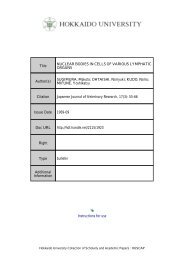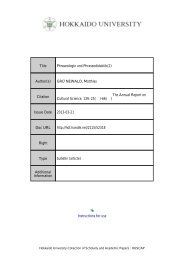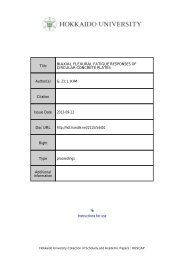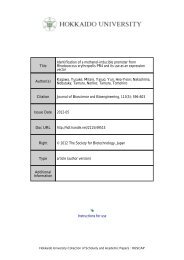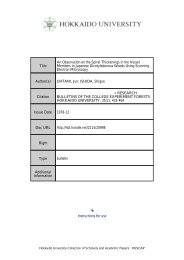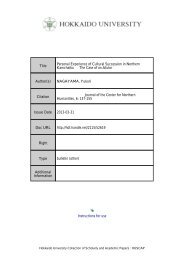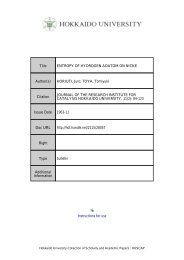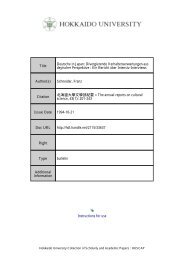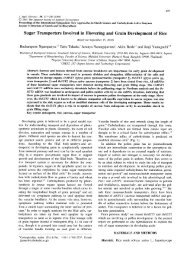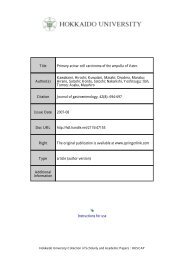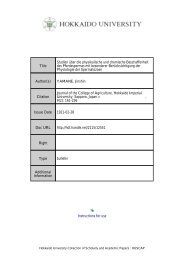ADSORPTION ISOTHERM AND THE STATES OF ADSORPTION
ADSORPTION ISOTHERM AND THE STATES OF ADSORPTION
ADSORPTION ISOTHERM AND THE STATES OF ADSORPTION
Create successful ePaper yourself
Turn your PDF publications into a flip-book with our unique Google optimized e-Paper software.
170<br />
J, HORIUTI and T. Toy A<br />
two hydrogen adatoms each bonded to a surface metal atom.<br />
(i) Exchange repulsion<br />
The potential between the two hydrogen atoms is given quantum-mechanically<br />
as Q-J(2, where Q or J is the Coulomb or exchange integral<br />
between the two hydrogen atoms. The Q-J(2 will be called the exchange<br />
repulsion in what follows. EYRING and POLANYI have evaluated 29 ) Q or J<br />
as 10% or 90% respectively of the Morse function of hydrogen molecule<br />
in calculating the activation energy of the elementary reaction H + H 2- H2 +<br />
H, on which base the exchange repulsion is - 35 % of the Morse function.<br />
It is well-known that the absolute value of the Morse function of hydrogen<br />
is too large SO ) at distances appreciably larger than the nuclear separation<br />
of hydrogen molecule, which are now in question. The above estimate<br />
of the exchange repulsion may in consequence be too large.<br />
(ii) Potential of interaction through metal electrons<br />
EUCKENSl> has pointed out the repulsion between adatoms through the<br />
intermediary of metal electrons. One of the present authors formulated the<br />
interaction of this cause on the basis of the quantum-mechanical theory of<br />
adsorption 10 ) developed by him as follows.<br />
Metal electrons impinging the metal surface within the cross section<br />
of an adatom are trapped and reemitted thus participating in the bond formation<br />
in accordance with (1) on the one hand and increasing the electric<br />
resistance of the metal on the other hand lO ). The competition for metal<br />
electrons occurs as their cross sections overlap each other, to weaken the<br />
bonds each of the adatoms with metal, hence the repulsive interaction between<br />
them. The above cross section was theoreticallylO) worked out at ca.<br />
47!'r;, where rs is the radius of atomic sphere of metal atom, in a fair agreement<br />
with its value 3-47!'r; deduced from the observed effect of adsorption<br />
on the resistance of evaporated metal film 32 ), which is appreciably larger than<br />
the area allotted to a surface metal atom.<br />
(iii) Electrostatical interaction potential<br />
Adatoms may be more or less charged to contribute to the repulsive<br />
potential by electrostatical interaction between dipoles thus formed as discussed<br />
by de BOER S3 ) ; as he remarks, however, the repulsive potential of this<br />
cause is too small to account for the overall one.<br />
The exchange repulsion amounts to 0.1019, 0.0134, or 0.0028 e V for the<br />
distance, 2.49 A, 3.52 A, or 4.31 A, which happens respectively to be the first,<br />
second, or third nearest distance between adatoms on (llO)-plane*). This<br />
value is not necessarily smaller than the overall repulsive potential at the<br />
*) Cf. § 4.




